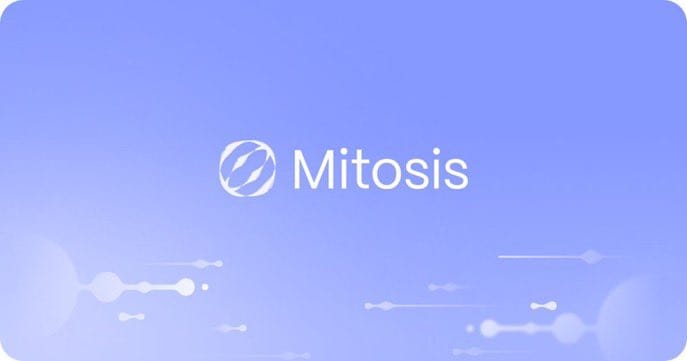Privacy: Monero, Nillion, Aztec, Arcium & Seismic — Five Paths Toward On-Chain Confidentiality

Privacy in crypto is one of those topics that gets people either hyped or hunted. Depending on who you ask, it’s either a human right or a red flag. But strip the FUD, and what you're left with is this: privacy is infrastructure. Just like bridges or consensus mechanisms, it’s not inherently “good” or “bad”— it’s a tool. And just like a shovel, you can plant flowers or bury bodies with it.
Now that regulators are trying to push self-custody behind closed KYC doors, and EU frameworks are taking shots at privacy-preserving tech, the builders doubling down on privacy aren’t just rebels — they’re necessary.
Let’s break down five projects building toward different flavors of private-by-design crypto systems: Monero, Nillion, Aztec, Arcium and Seismic. Each of them is tackling privacy from a different angle — execution, data, computation — and their approaches might just shape how Web3 stays truly decentralized.
Monero: Privacy by Default
We start with the OG.
Launched in 2014, Monero didn’t wait for the hype cycle or VC attention. It’s grassroots, it’s open-source, and it’s probably the most battle-tested privacy coin out there. Unlike Ethereum or Bitcoin, Monero doesn’t leave your transaction data hanging in the open.
Here’s how it works:
- Ring Signatures: Every transaction gets mixed with decoy ones. You can’t tell who really sent what.
- Stealth Addresses: Each transfer generates a one-time-use address, so nobody sees your real one on-chain.
- RingCT (Confidential Transactions): Hides the amount you’re sending. No peeking.
- Mining: You can mine Monero on your laptop — no ASICs required. It’s meant to stay decentralized and accessible.
It’s not flashy, it’s not modular, and it doesn’t run DeFi apps. But if you want a private store of value or to transact peer-to-peer without a spotlight, Monero is still the gold standard.
Nillion: Privacy as Computation Infrastructure
Now let’s go futuristic.
Nillion is not trying to be “the next Monero.” It’s not even a blockchain in the traditional sense. Instead, Nillion is building a privacy-preserving computation layer for Web3—focused on decentralizing trust around sensitive data.
Their primitive is called Nil Message Compute (NMC), and it allows you to compute on private data without ever exposing it — similar to how MPC or ZK proofs work, but optimized for real-world scale.

Use cases? Way beyond payments:
- Train AI on encrypted data
- Fully private messaging
- Secure healthcare analytics
- Encrypted trading without frontrunning
- Private inference of LLMs
- Composable digital identity
- Even trustless multiplayer games
Nillion breaks computation into three layers:
- Processing Layer – Secure compute clusters run private logic
- Coordination Layer – A lightweight blockchain to coordinate compute jobs
- Connectivity Layer – Hooks into other blockchains, DePINs, and systems
It’s one of the few privacy projects trying to be default infra for the entire private data economy. If Monero is a digital hoodie, Nillion is a black ops stealth suit for apps.
Aztec: Layer 2 Privacy for Ethereum
On Ethereum, everything is public by default. You know that.
Aztec is trying to change that—without losing the Ethereum connection. Think of it like ZK-Rollups, but private. Aztec is a privacy-first Layer 2 that lets you write smart contracts with both public and private logic, all provable on-chain.
How does it work?
- Private Execution (PXE): Your private logic runs on your own device
- Public Execution (AVM): Public parts run on Aztec nodes
- Private State: Managed via UTXOs and nullifiers
- Public State: Traditional Merkle tree on-chain
- Noir Language: Custom DSL for writing private contracts

Aztec is not EVM compatible on purpose — it’s building a new alt-VM to allow mixed-state, mixed-execution apps that actually preserve user privacy.
What makes it stand out is the UX focus: all private execution happens on the client, meaning developers get tools to make privacy-first apps without having to write MPC or ZK circuits manually. The endgame is programmable privacy on Ethereum, for anything from identity to gaming to finance.
Arcium: Encrypted Supercomputer for Everything
Arcium is doing something wild — building a decentralized, parallel confidential computing layer that can execute any logic on encrypted data. Not just for dApps, but for AI, DePIN, identity, and more.
They’re not a blockchain, but a privacy compute network powered by something called MXEs (Multiparty Computation Execution Environments). These are like virtual machines that run MPC or FHE-based computations, verifiable by design.
Key components:
- arxOS: Distributed OS managing computation across nodes
- Arcis SDK: Interface for developers to deploy private apps
- Trustless, chain-agnostic: Can integrate with any base chain for consensus and DA

Why it matters:
Arcium lets you use data without seeing it.
AI can train on encrypted datasets. DePINs can optimize without leaking sensor data. DeFi can settle trades without revealing intent.
It’s modular, composable, and privacy-maxi in the best way. Unlike privacy coins, Arcium isn’t just about shielding value — it’s about powering the next-gen encrypted internet.
Seismic: Encrypted DeFi Without the Infrastructure Overhead
Most encrypted blockchains either feel like academic prototypes or require devs to cobble together custom stacks using ZK, MPC, and a dozen other acronyms. Seismic said no thanks — and built a chain that lets you deploy encrypted DeFi with a single Solidity contract.
It’s not a rollup, it’s not a privacy layer. Seismic is a full L1 encrypted blockchain, built around secure enclaves (Intel TDX). It forks familiar tools like Solidity, Reth, and Foundry, but wires them up for encrypted memory, state, and orchestration — so devs don’t need to split logic across public and private silos.
What that unlocks:
- Blind auctions where no one can peek
- Shielded pools that don't expose flow
- Dark pools that actually stay dark
- All the perks of private DeFi, minus the Frankenstein stack

Seismic isn’t just about payments. It’s about unlocking the $100T TradFi market that public blockchains will never touch unless they encrypt. And with full-stack open-source infra, it gives builders what they actually need: privacy that just works.
Why It Matters Now
Let’s not pretend regulators are sleeping on this.
In the EU, MiCA already makes things hard for privacy tech. The FATF wants tighter KYC rules. Governments across the globe are targeting self-custody wallets, coin mixers, and privacy-preserving chains.
Privacy is under fire — and yet, the builders are shipping harder than ever. Because crypto, at its core, was never about transparency. It was about choice. And privacy is not a crime — it’s the baseline of freedom.
Monero, Nillion, Aztec, Arcium and Seismic are five very different answers to the same question:
How do we make the internet less extractive, and more sovereign?
Final Thoughts
Not all privacy tools are the same.
- Monero is for value transfer, fungibility, and true anonymity
- Nillion builds privacy as compute infra
- Aztec unlocks private Ethereum apps
- Arcium brings encrypted execution at internet scale
- Seismic delivers encrypted DeFi without the engineering burden
The narratives are changing. Privacy isn’t the dark alley of crypto anymore — it’s the foundation for the next wave of Web3. Whether regulators like it or not, privacy is back.


Comments ()